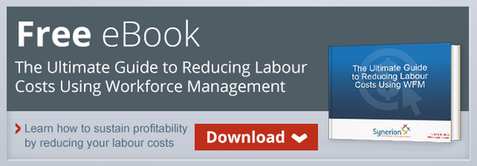 The fictionalized workplace of the future isn’t complete without humanoid robots and machines working without the presence of a single human. While today’s workplace is shifting towards more automation, that landscape isn’t without its human counterparts. In fact, today’s workplace needs smart and skilled workers more than ever to ensure that automation is being used appropriately. As non-human labour becomes more commonplace everywhere from hospitals to restaurants, understanding your worker’s roles in that landscape is more important than ever.
The fictionalized workplace of the future isn’t complete without humanoid robots and machines working without the presence of a single human. While today’s workplace is shifting towards more automation, that landscape isn’t without its human counterparts. In fact, today’s workplace needs smart and skilled workers more than ever to ensure that automation is being used appropriately. As non-human labour becomes more commonplace everywhere from hospitals to restaurants, understanding your worker’s roles in that landscape is more important than ever.
The Benefits of Workplace Automation
As most industries have already discovered, workplace automation has some serious benefits that are financially difficult to replicate with more staff. Jobs such as transporting specimens in a hospital or addressing envelopes for campaigns takes serious manpower or the investment in a piece of instrumentation. Workplace automation allows highly trained staff to focus on complicated job duties rather than menial tasks and allows less complicated tasks to be farmed out to non-human labour that doesn’t require benefits, salary, or time off. The overall result of workplace automation is more work for less money and savings that are ultimately passed on to the customer.
Workplace automation also goes a long way in reducing human error. No matter how well-trained employees are, errors simply can’t be avoided when human workers are involved. Workplace automation minimizes, and in some cases, eliminates human error. This can save businesses time and money as well as optimize workflow by avoiding time spent rehashing old business because of mistakes. Treating automation as a means to enhance employees' job duties rather than an employee replacement program helps keep expectations in check.
The Drawbacks of Non-Human Labour
Workplace automation isn’t all benefits. When workplace automation is improperly implemented, it can cost businesses time, money, and effort. Nothing should be implemented in your work flow without validation and understanding that introducing a new piece of workplace automation may mean duplication of work and trouble-shooting until the process is perfected. The more specialized the automation is, the longer this process can take. Another drawback that businesses often find when purchasing automation is that it requires more human interaction than originally intended. While automated systems require less work, they still require ongoing maintenance by a trained individual as well as regular updates to keep that automation up to date.
Finding a Balance
Ultimately, thriving businesses will need to rely more on automation in the coming decades to survive in their industry. Implementing workplace automation mindfully is essential to finding that balance. Businesses who recognize smart opportunities for automation will improve their workflow and enrich the lives of their employees. Businesses who simply attempt to be the first to reach full automation will end up foolishly spending money on excessive systems that can’t match the experience or education of seasoned employees.
Even for small businesses, there are some workplace automation tools that can be implemented with little start-up cost and minimal upkeep. Tools like workforce management systems and secure timekeeping tools can decrease the amount of time managers spend on administrative tasks while still providing managers with the ability to review and alter information easily. This small step into workplace automation allows businesses to save time and introduce the concept to employees.
While you may not want to start training managers to manage their robot underlings yet, workplace automation is making its way into the workforce and businesses need to start preparing now. Introducing workplace automation slowly with tried and true methods like a workforce management system allow businesses to gain the benefits of workplace automation without driving up costs.
